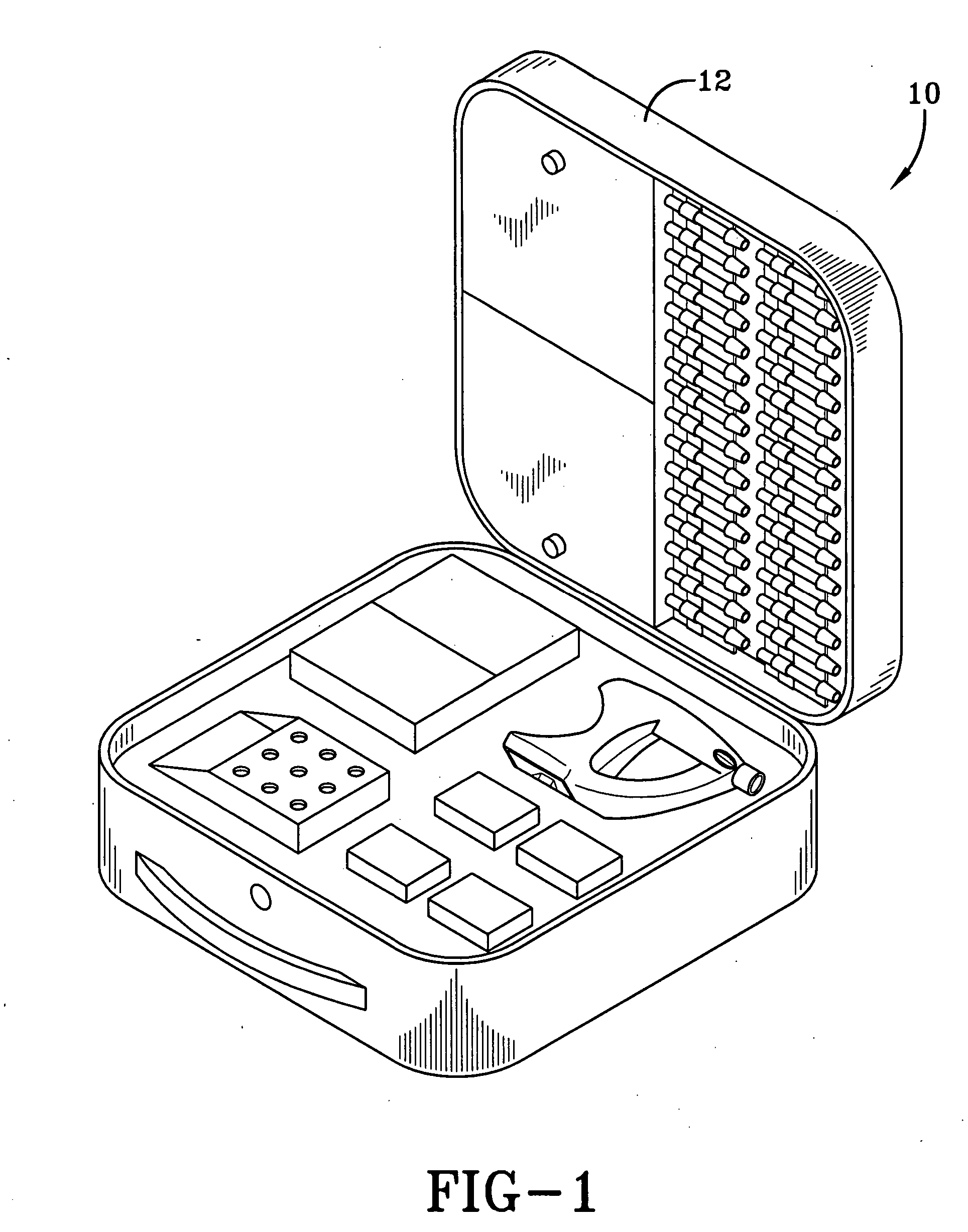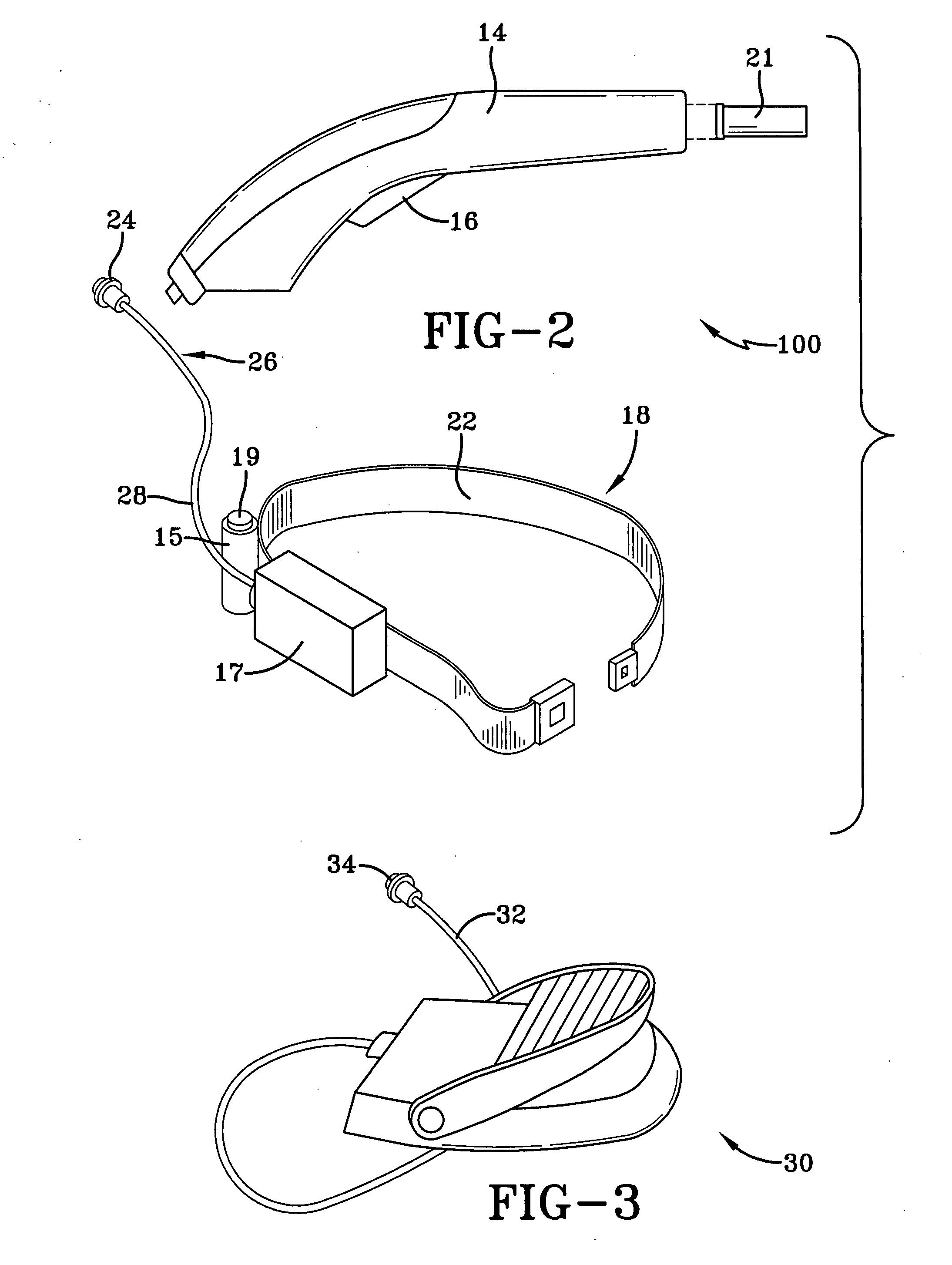Hypodermic injection system
a technology of hyperoderm and injection system, which is applied in the direction of infusion syringes, transportation and packaging, liquid transfer devices, etc., can solve the problem of not having the option of conventional compressed gas, and achieve the effect of reducing cost and reducing the risk of contamination
- Summary
- Abstract
- Description
- Claims
- Application Information
AI Technical Summary
Benefits of technology
Problems solved by technology
Method used
Image
Examples
Embodiment Construction
[0062]FIG. 1 illustrates a customized, all-inclusive, carrying case 12 for the portable injection system, station or kit 10 according to an embodiment of the invention. Each carrying case 12 of the portable system 10 contains all components necessary for a healthcare team to efficiently administer thousands of injections at the rate of up to 600 people per hour, this equipment to include several magazines, at least one handpiece, enough battery power for the number of injections expected, manual arming means if needed, at least one filling system, several battery charging options and simple tools to effect repairs to the system components.
[0063] The case has retractable legs (not shown) for standing the unit in an upright position and flat panels from the four sides that can be pulled out to form a working surface (not shown) for the healthcare team if no other surfaces are available or convenient. Sterile components such as gauze, cotton balls, band-aids, etc., will also be housed...
PUM
 Login to View More
Login to View More Abstract
Description
Claims
Application Information
 Login to View More
Login to View More - R&D
- Intellectual Property
- Life Sciences
- Materials
- Tech Scout
- Unparalleled Data Quality
- Higher Quality Content
- 60% Fewer Hallucinations
Browse by: Latest US Patents, China's latest patents, Technical Efficacy Thesaurus, Application Domain, Technology Topic, Popular Technical Reports.
© 2025 PatSnap. All rights reserved.Legal|Privacy policy|Modern Slavery Act Transparency Statement|Sitemap|About US| Contact US: help@patsnap.com



